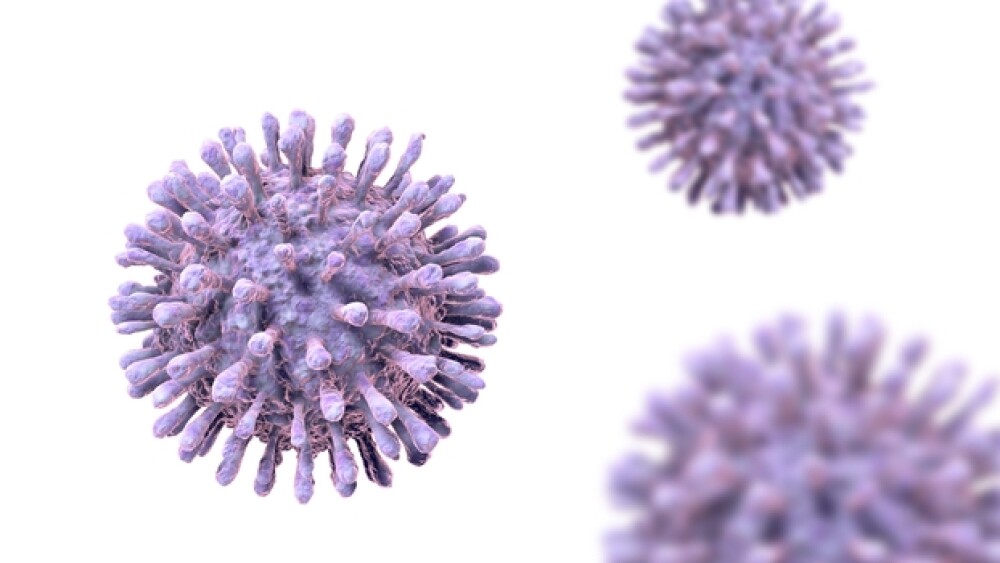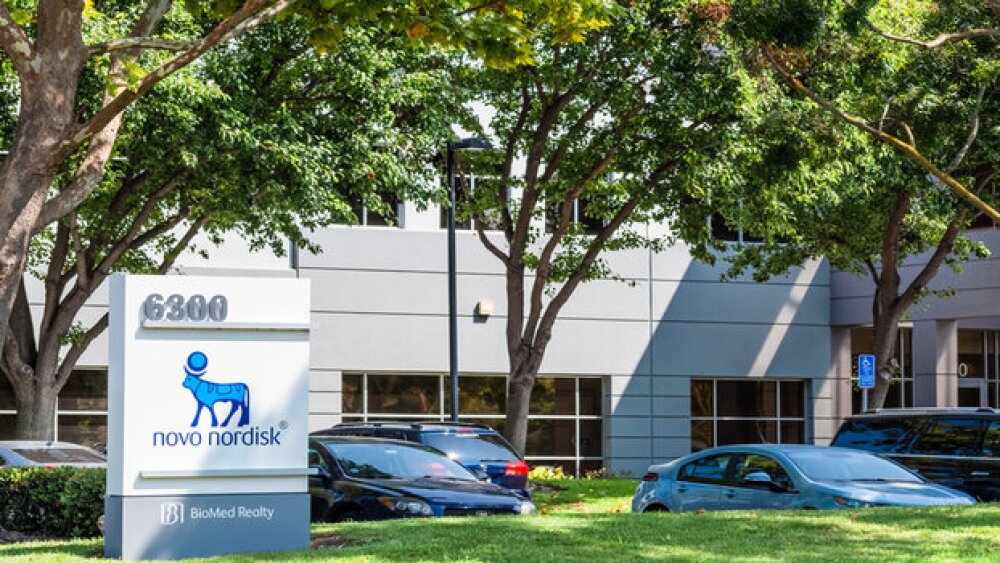To learn more about ImmunityBio’s HIV drug candidate, BioSpace spoke to Dr. Whitney and Jeffrey Safrit, PhD, director of Cell-Mediated Therapies in Virology at NantKwest.
Human immunodeficiency virus (HIV) management has come a long way, now making it possible for people with HIV to live longer, healthier lives. Antiretroviral therapy (ART), drugs that prevent HIV from replicating in your body, are largely to thank for that improvement. Despite ARTs ability to slow disease progression, it is not a cure.
(For more information about HIV, current HIV therapeutics, and the HIV drug pipeline, check out BioSpace’s HIV Insight Report.)
Long-term drugs that attack the latent HIV reservoir are the next big hurdle to advance HIV treatment towards a cure. The latent reservoir includes infected immune cells that don’t actively produce virus but allow the virus to ‘hang around’ in the body for years. These latent cells can switch on to start making HIV at any time, creating an acute HIV infection.
If a drug can access and clear the HIV reservoir, it can attack HIV where it hides, not just keep HIV below the active infection level (like ART does). Having drugs that induce long-term remission also means patients don’t have to take drugs daily (like they do with most ART). This would reduce the pill burden on patients and give patients who may have a hard time following a daily dosing schedule access to effective drugs to manage their HIV more efficiently.
ad
Promising preclinical results of ImmunityBio’s HIV drug in monkeys (specifically rhesus macaques) were presented at the 2020 Conference on Retroviruses and Opportunistic Infections (CROI) in early March.
“While antiretrovirals have improved patient outcomes and significantly decreased morbidity and mortality, there is neither a vaccine nor a cure for HIV infection,” ImmunityBio CEO Patrick Soon-Shiong, MBBCh, MSS, FRCS (C), said in the company’s press release. “ImmunityBio is therefore searching for a solution that will impact the HIV reservoir.”
“These studies demonstrate that combination therapy with N-803, ImmunityBio’s IL-15 superagonist, which activates NK and CD8+ T-cells to stimulate the immune system, added together with broadly neutralizing antibodies, may enable immune control of HIV in the absence of antiretroviral treatment,” added James B. Whitney, PhD, investigator at the Center for Virology and Vaccine Research at Beth Israel Deaconess Medical Center and Harvard Medical School.
To learn more about ImmunityBio’s HIV drug candidate, BioSpace spoke to Dr. Whitney and Jeffrey Safrit, PhD, director of Cell-Mediated Therapies in Virology at NantKwest.
What is N-803 and how does it work?
N-803, previously called ALT-803, is a long-acting interleukin (IL)-15 “superagonist” – to fully understand what that means, lets review some basic immunology.
A superagonist is a molecule that produces a response much greater than the natural molecule (IL-15, in this case). IL-15 is a type of immune signaling protein (called a cytokine) that induces expression of certain immune cells, such as natural killer (NK) cells and CD8+ T-cells, that find and kill tumor cells and virally infected cells.
“IL-15 is well-known in preclinical studies to activate the immune system against cancer and virally infected cells,” Safrit explained. “IL-2 is another cytokine that has anticancer and anti-inflammatory properties, but targeting it generates many undesirable side effects, which is why we chose to focus on IL-15.”
Now back to what N-803 is. N-803 is a combination of a few different proteins fused together, containing a mutated form of IL-15, an IL-15 receptor alpha chain, and an Fc receptor. Using a combination of proteins makes N-803 more stable than IL-15 alone, meaning the drug can last longer in the body and better stimulate the immune system for longer.
N-803 works by binding to the IL-15 receptor on NK cells and CD8+ T-cells, which activates and increases the amount of those cells in the body. These cells can then seek and destroy cancer cells and cells infected with a virus.
“N-803 activates particular parts of the immune system, NK cells and CD8+ T-cells, needed to fight HIV and cancer,” said Safrit. “N-803 goes into the lymph nodes and other ‘protected’ sites that T-cells might not typically be able to enter.”
In fact, N-803 was previously shown to be effective against certain cancers and received FDA Breakthrough Therapy Designation (BTD) for non-muscle invasive bladder cancer in December 2019.
Because N-803 activates immune cells that also attack virally infected cells, you may be wondering if N-803 can be used as a treatment for viral infections, such as HIV. The answer is (potentially) yes!
ImmunityBio’s HIV preclinical results
Results from three preclinical studies were presented at the CROI 2020 virtual conference in March by Dr. Whitney. All three studies looked at N-803 in monkeys (specifically rhesus macaques) infected with simian-human immunodeficiency virus (SHIV), a humanized version of the monkey equivalent of HIV (called simian immunodeficiency virus, or SIV).
“SHIV is a chimeric virus with an HIV envelope and a SIV genome inside,” explained Whitney. “We try to mimic HIV infections as best as we can in non-human primates. The viral reservoir in non-human primates is relatively comparable to HIV in humans – it’s as good as we can do at the moment.”
The first study looked at what doses of N-803 can be tolerated in SHIV-infected monkeys and if there were any drug interactions between N-803 and the broadly neutralizing antibody (bNAb) 10-1074. bNAbs are antibodies that can block many types of HIV from infecting healthy human cells.
“bNAbs can effectively suppress HIV on their own, but combining them with an immunomodulator, like N-803, creates a synergistic effect,” Whitney said. “bNAbs target viral antigens, but there are no viral antigens expressed during latent HIV infection. N-803 boosts the effector portion of the immune system, making viral antigens more present and allowing the bNAbs to more effectively detect and eliminate HIV.”
Using the dosing information from the first study, the second study evaluated the activity of N-803 and 10-1074 in 20 ART-suppressed SHIV-infected monkeys. The monkeys were divided into four treatment groups: N-803 alone, bNAb 10-1074 alone, N-803 plus 10-1074, or a placebo. Activation of NK cells in the blood peaked 48 hours after N-803 administration and CD8+ T-cells showed “robust expansion” during N-803 dosing.
Although HIV viral loads increased when the monkeys stopped ART post-treatment (called viral rebounding), 3 of the 5 monkeys who received both N-803 and 10-1074 showed a lower viral load peak (in acute-phase viremia) that was quickly controlled to a baseline viral load. Importantly, the low viral load was maintained for over 300 days (43 weeks) without ART.
In the third study, they added another bNAb (3BNC-117) to the treatment cocktail. Sixteen ART-suppressed, SHIV-infected monkeys were treated with either a combination of N-803, 10-1074, and 3BNC-117, or a placebo. Similar results were seen – monkeys treated with N-803 and the two bNAbs had activated NK cells in their blood. After receiving treatment, the monkeys stopped ART; all monkeys had an increase in HIV viral loads, but 6 of the 8 monkeys treated with N-803 and the two bNAbs saw a reduction in viral load to background levels, which was maintained for at least 140 days (20 weeks) without additional ART.
Combining the results of the second and third studies shows that 9 of the 13 monkeys (69 percent) treated with N-803 and one or two bNAbs showed SHIV suppression for more than 20 weeks after stopping ART.
“This was striking durability,” Whitney commented. “There was still virus present in the animals, so this is not a cure, but the immune system could keep the SHIV at bay to create immune-induced long-term remission.”
In these studies, the monkeys were only treated with N-803 for up to 6 weeks. Dr. Whitney explained that non-human primates can’t be treated with N-803 long-term (longer than 5-6 weeks) because the primates develop anti-drug antibodies (ADAs). N-803 contains a human Fc receptor, so the primate’s immune system recognizes it as foreign and mounts a response against the drug. He anticipates patients will be able to be treated with N-803 for longer because such an immune response won’t happen.
Importantly, N-803 was well-tolerated, with an injection site rash being the only notable side effect.
“We are aiming for the high bar of ‘safety, safety, safety,’” Whitney said. “We saw a high margin of safety in the non-human primate preclinical studies with no safety issues observed, which is very important to me. Because we used a chimeric SHIV virus in the non-human primate studies, it is critical that N-803 moves along to clinical evaluation of HIV in humans.”
Another preclinical study in monkeys done by other researchers reported similar results in a Nature paper earlier this year. The researchers studied the effects of N-803 in SIV-infected rhesus macaques and HIV-infected humanized mice. After depleting CD8+ T-cells in the monkeys and mice, treatment with ART and N-803 caused “robust and persistent reactivation of the virus,” allowing the drugs to access previously latent HIV.
“The durable potency if N-803 is much greater than other immunomodulatory agents,” Whitney added. “We could potentially dose longer in humans, such as once every 2-3 weeks. The next question to answer in clinical trials will be how remission can be maintained once it has been achieved and how to create an appropriate dosing schedule.”
Clinical studies of N-803 in HIV
A Phase 1 trial was completed earlier this year, where the safety, tolerability, and efficacy of N-803 was assessed in 10 adults with ART-controlled HIV.
A new Phase 1 trial, funded by the National Institute of Allergy and Infectious Diseases (NIAID), will test the safety and efficacy of N-803 with and without bNAbs. Researchers will dose an estimated 46 ART-controlled, HIV-positive adults with either N-803 alone or N-803 with two bNAbs (10-1074 and VRC07-523LS). N-803 will be given as a subcutaneous injection every three weeks (eight doses total) and the bNAbs will be given intravenously (IV) at pre-defined intervals. Patients will remain on their ART throughout treatment. After finishing treatment, they will stop their ART and be closely monitored for up to 24 weeks to see if their HIV remains suppressed. The trial, which has been disrupted by the novel coronavirus pandemic, is expected to start recruiting patients in the fall.
“There aren’t too many immune modulators in clinical trials right now, so we are excited to see how N-803 will do in this Phase 1 trial,” Safrit added. “The field is trying to move away from more toxic ARTs. To cure HIV, we know that one agent is not enough – a combination of drugs is needed. Researchers are searching for the right treatment combinations right now.”
What about other viral infections?
You may be wondering if N-803 can be used to treat other viral infections, such as influenza and the novel coronavirus (SARS-CoV-2).
While that is still unknown, ImmunityBio did announced their partnership with Microsoft to combine supercomputer powers and analyze how the virus binds to human cells (via the interaction of the virus’ outer spike protein and the human cell’s ACE2 receptor).
Dr. Soon-Shiong will present pipeline updates at the virtual Bank of America Merrill Lynch Global Healthcare Conference on May 14.





